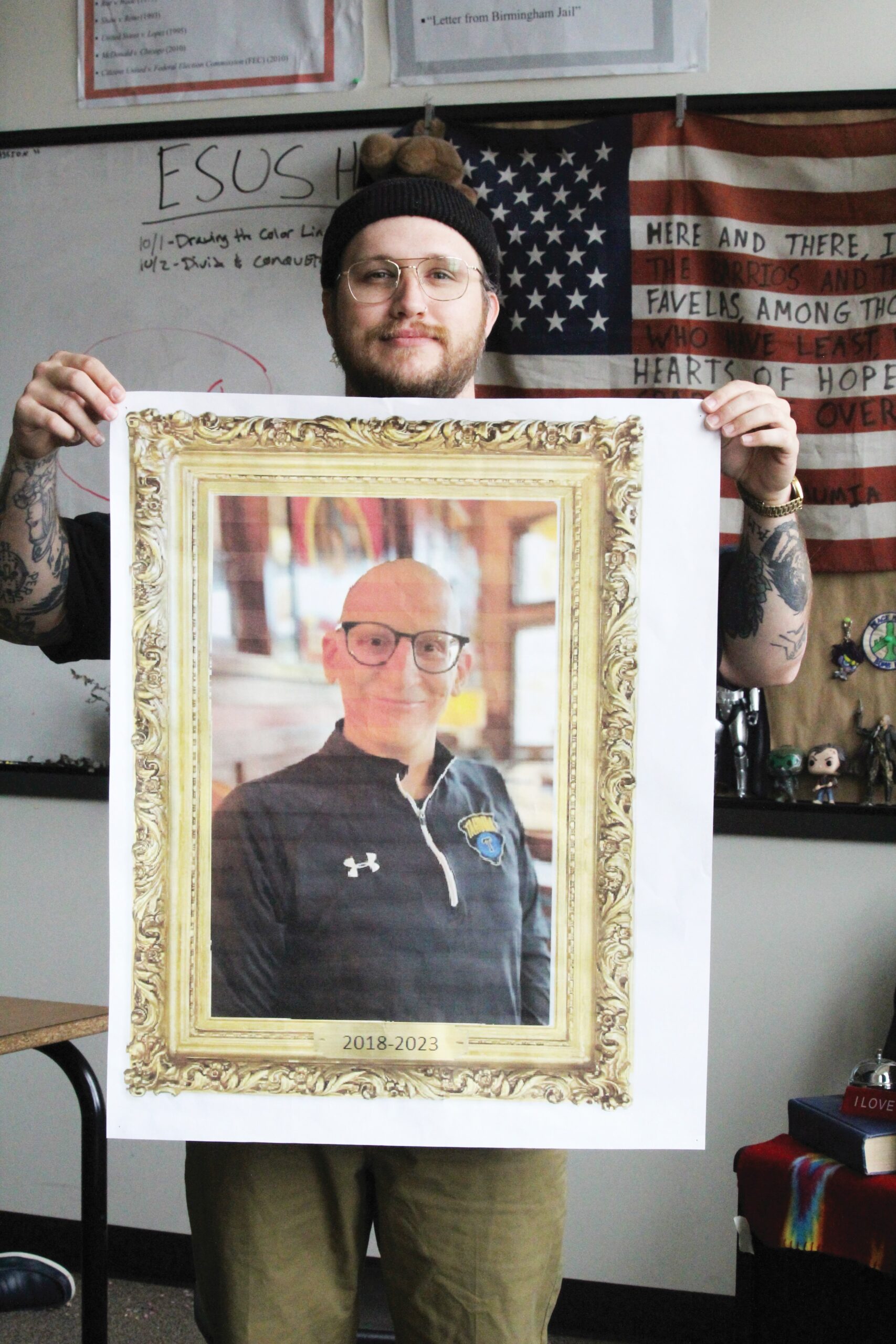Content warning: mention of racial trauma and race-based violence.
On the Sunday coming out of Thanksgiving Break, Nov. 28, Roosevelt High School students gradually became aware of an Instagram account with the handle @roosevlts_wsu. The account profile indicated that “WSU” stood for “White Student Union.”
The Roosevelt WSU account was just a day old at the time. It displayed the school’s distinctive green, cursive “R” beside a bio that falsely advertised Tuesday club meetings in the classroom of Adam Karl, a Roosevelt language arts teacher.
The account also named Gabbi Smith, a Roosevelt junior, as club president. Upon seeing the post, Smith recounts, “I was feeling partially really confused, because I had not made that, and I didn’t know what it was, so I was confused why my name was attached.” Smith goes on to describe distress and worry over the account and its actions online.
According to Scholastic, 7% of students have experienced someone impersonating them online.
A post was made to the account, further reiterating meeting times. The comments section below this post ran long.
Myles Mawa, Roosevelt senior and Vice President of Black Student Union (BSU), posted screenshots of the account to his story. He reflects on the anger and frustration he felt with the account itself, “but also with a lot of Roosevelt students that were commenting, trying to engage with the account, because that’s exactly what they want.”
After seeing this post and its engagement, Mawa added to his story, urging people not to interact with comments or messages, and to block and report the account to Instagram as well as to the Roosevelt administration. Mawa recounts student engagement with his content.
Mawa notes on the performative nature of the comments below the post, that “Those same exact people are ones that are not vocal in school, are not vocal over social media. I’ve just not seen them putting in that work and putting in that learning outside of social media.”
Beyond engagement in the comments section, the account had privately messaged multiple students, and threatened physical harm and violence toward Roosevelt’s Black students. To a lesser extent, there were expressions of misogyny and transphobia as well. Late Sunday night, shortly before the account was deleted, a post was made to the account’s story that threatened to kill all Black students.
Screenshots of account activity and private messages with students were shared with the Roosevelt administration. Principal HkwauaQueJol Hollins recounts, “I had probably 15 to 20 student reports first, and then I had a couple reports from staff, and then I also had some reports from parents.”
Language arts teacher Amy Noji was forwarded a report of the social media activity late Sunday, and first asked herself, “What do I need to do? How can I help, right now?” As a member of the Teacher Leadership Cadre (TLC)– a group of staff invested in professional 2development– and a teacher invested in racial equity work, Noji took initiative to reach out to about 20 other teachers similarly involved in racial equity work. Her goal: to organize a safe space for students.
The following morning, second period announcements over the loudspeaker cited the accounts of “racist, misgoynist, sexist, and cis-sexist” comments and threats via social media. Specifically, teachers had organized spaces to “provide support for students who want to come together to speak and listen from the heart, in regards to accounts, words, and threats that were posted on social media over the weekend.”
A list of teachers who had made their classrooms available and open during lunches were read out, with Noji’s room among them. “I had about 15 students come in on Monday, and about five of them were students of color, none of them were African American or Black students,” she says. Noji goes on to explain the loose nature of the conversation as students processed and discussed allyship.
Other teachers didn’t have the same attendance numbers, with as few as one student showing up. A number of students frequented the counseling department, particularly the offices of Courtney Judkins and Maya McKenzie, in the days following the Instagram account’s threats, as support was extended to Black and LGBTQ+ students.
The string of threats and violence didn’t stop Sunday. Tuesday morning, an Instagram messaging thread contained a threat to bomb Roosevelt. The threat came from an individual who does not attend Roosevelt. According to Assistant Principal Roy Merca, at “about 3-3:30 ish, someone called the police and reported this threat.” Merca continues, “About 6-7 a.m., this person was apprehended. We [Roosevelt admin] didn’t know he was apprehended until about 8:15 ish or so.”
Some students have expressed concern that they were only made aware of the school’s bomb threat after having arrived to school. However, Hollins met with Seattle Public School (SPS) officials early Tuesday morning to decide a course of action. According to Merca, this plan consisted of police presence surrounding school grounds and additional security.
Nonetheless, some students were unaware, and felt unsafe at school on that day. Sav Journee, a Roosevelt freshman, had messaged with the account, and recounts, “They said that they would lynch me or any Black students if they graduated.”
Journee goes on to describe feelings of unsafety at school the following week, “I was scared. I ended up going home early.”
School response and investigation.
According to SPS resources on Student Rights & Responsibilities, “The District will respond to off-campus student speech, including speech transmitted through electronic means, that causes or threatens to cause a substantial disruption on campus or interferes with the right of students to be secure and obtain their education.”
According to Hollins, “Every time there’s one [social media account] that’s reported, I then contact my direct supervisor who’s Director Halfaker, who then either contacts DOT [Department of Technology] or technology.” Hollins elaborates that once the threat is communicated with the district, it is out of Roosevelt’s hands.
Responsibility for investigating these incidents is a collaborative effort among the Department of Technology (DOT), security, and the Seattle Police Department (SPD), Hollins explains.
These investigations are currently ongoing, and hence information is limited. “So there’s not much I can comment on until the cases are investigated,” says Hollins.
With a reflective tone, Hollins closes, “The foundation and the core of Roosevelt is just too strong to let threats get in the way of our already established culture, and what we feel like we believe of who we are in our heart, and what we do. I don’t think we’re gonna let something like this make us scared, either to come to school or to be who we are. I think we’re more resilient than that.”
Rona Eslamy, Makayla Baker-Curtis, Ula Ekmecic, and Katie Thorson contributed to the writing and reporting of this article.


